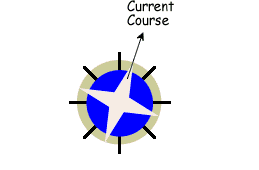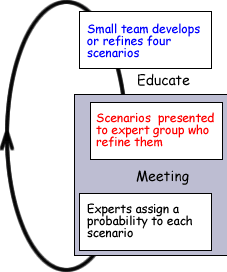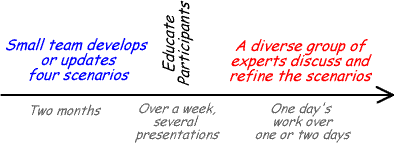 Scenario
Planning Scenario
Planning
Use scenarios to refine your view of the future until
it is robust enough to prepare you to deal for range
of outcomes that might develop and formulate your strategy.
Overview
In this section, I describe:
Key words
 Create
or influence markets, drivers, customer centric, visionary,
pattern identification, identify emerging demand, overcome
engrained perceptions, adapt, learn, what if, rehearse,
make sense of the unexpected, hedge, flexibility, timing,
probability Create
or influence markets, drivers, customer centric, visionary,
pattern identification, identify emerging demand, overcome
engrained perceptions, adapt, learn, what if, rehearse,
make sense of the unexpected, hedge, flexibility, timing,
probability
Characteristics
A learning experience where key players and outside
experts examine the evolution of events that will lead
to market opportunities.
Strategic Planning Process
Using scenarios to formulate strategy is a formal process;
a few people people develop four likely futures. Consensus
evolves from iterative, formal discussions, where a diverse
group of experienced people discuss these likely routes
and assess the probability that the scenario will play
out. The key questions is what will drive that outcome?
Through the discussions, key players in a firm rehearse
their responses and timing, so that when the "drivers" emerge,
they can make an informed choice about the route to follow.
The scenario process is also an ideal, fast technique
to anticipate a competitor's responses.
Preparing
the Scenario
Two or three people prepare the scenarios and a presentation
for the participants. They consult with folks inside
and outside the firm about which scenarios are appropriate.
They want to anticipate future demand.
Format of the scenario
The scenario description is one to two pages long, with
a brief story of how it will evolve, expectations of
customer responses and demand for the product or service.
Include some rough numbers, usually demographic data.
Technology trends are highlighted.
Educate the participants
The team provides the participants of the upcoming meeting
the scenarios and explains the process. It is likely
that during these presentations, there will be suggestions
for additional detail, which can be incorporated.
The purpose is to give the participants some time to
reflect before they meet.
Meeting Agenda
Morning
- Brief overview of the scenarios
- 1st breakout into predetermined groups to discuss
a scenario
- 2nd breakout, where the participants can pick their
scenario
Afternoon
- Facilitators report the morning results and scenario
refinements
- Group discussion — what are the leading indicators
(drivers)
- Stawman vote on likelihood for each scenario
- Group discussion — how should the industry
or firm respond
- Individual vote on the probability of each scenario
- Key points for report
After meeting report: results of afternoon discussion,
probabilities of each scenario, likely responses. Then
the core team refines the scenarios for presentation
at the next meeting, usually in three to six months.
Timelines
Scenario planning is a multi-year effort, where new
scenarios are introduced as others prove unlikely.
Folks involved
The small team that prepares the initial draft of the
scenarios includes three people:
- one from R&D, Marketing or Product Development
- an experienced technology implementer
- a good communicator
and some research support, to put some numbers to the
ideas.
The participants at the scneario meeting are a diverse
group of the best folks you can invite and who like to
formulate strategies.
Timeline

|